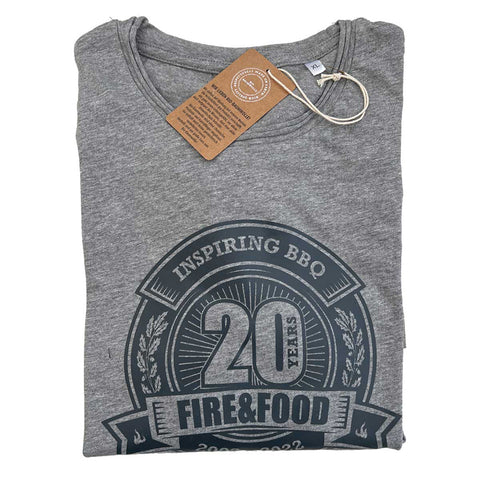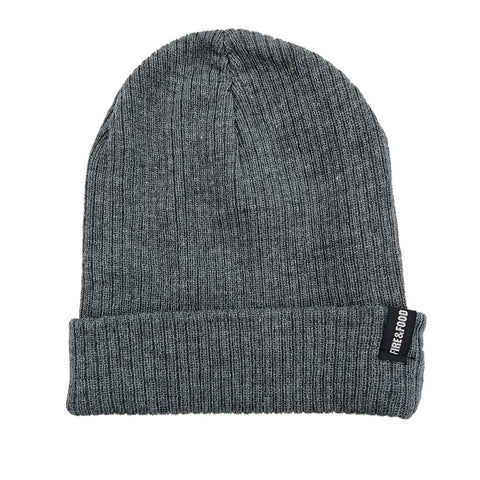The perfect branding: appearance versus taste?
It is probably one of the most popular motifs when it comes to grilling: a steak or burger patty with a perfect diamond pattern that the grill has burned onto the surface. In steak competitions, this branding is a real science. In fact, it is worth taking a closer look at what actually happens when high heat hits the surface of a piece of meat. – By Markus Mizgalski
Maillard reactions
In many barbecue books you read that a Maillard reaction takes place when meat is grilled and the surface caramelizes. This is not wrong in principle, but it is somewhat imprecise. This is because these processes, named after Louis Camille Maillard, are a highly complex sequence of chemical reactions that begin at around 140° C and ultimately lead to non-enzymatic browning. The basis for Maillard reactions are amines such as proteins. And this is where the difference lies with caramelization, where carbohydrates form the basis of the process. Depending on the food, both processes can take place in parallel, as long as sugar and proteins are present at the same time. Neither Maillard nor caramelization are limited to meat, by the way. The corresponding chemistry also creates a different texture and completely new taste experiences in chips, coffee beans, toast or onions. Among other things, the roasted substances create the famous umami, the savory taste.
Maillard and grill pattern
Now it is quite obvious that a grill pattern is created when certain areas are heated more intensely than others. This makes them darker. In steak contests, the branding stripes are usually almost black, which corresponds to very advanced Maillard reactions. In plain language, this means that the food in these areas has come very close to the point of charring; it is burnt here or at least close to it. Accordingly, the taste is no longer dominated by hearty roasted notes, but increasingly bitter ones. In addition, the patterns are usually created at very high temperatures, which can promote the formation of reaction products that are hazardous to health. HAA, heterocyclic aromatic amines, are formed in protein-containing foods, which can possibly promote a precursor to colon cancer.
Special grill inserts with a diamond pattern save you from having to reposition the grilled food.
With so-called grill grates made of aluminum, very successful branding can be created on most grills.
Grill pattern, but how?
From a medical and culinary point of view, an evenly brown crust is the optimum. This is best achieved on a cast iron or fire plate. However, if you still don't want to do without dark stripes or the diamond pattern, there are various options for achieving this. The best known is probably the cast iron grate, which - depending on the manufacturer - is even available with diamonds. However, caution is advised here: cast iron is a very good heat store, so it can transfer a lot of energy to the meat for a long time. The hotter the grate, the faster an intensive branding occurs. It is not without reason that Napoleon recommends setting the Sizzle Zone grate to the higher setting, because otherwise it will take less than a minute before you have almost black stripes on the steak. The same applies if you use charcoal to ignite a hellfire under a cast iron grate. A more moderate heat is definitely appropriate here.
You can take a more relaxed approach with a stainless steel grate. This also gives the meat a nice pattern, but it takes a little longer. In addition, many stainless steel grates are constructed with thinner bars, so the stripes are far less wide than is the case with some cast iron grates.
A cast iron grill is ideal for branding because it creates beautiful, wide stripes on the meat.
If cast iron gets very hot, a black grill pattern will quickly form and the food will burn.
Special “branding tools”
There are so-called sear grates that burn the famous diamond pattern directly onto the meat. These are usually a special type of cast iron grate that you may get as an extra for modular grates. The grill grates that are available for many grills are made of aluminum. They conduct heat very well, but do not store it as well as iron. Overall, the heat can be dosed better with this system, but you need a grill with good performance.
Outdoorchef's Blazing Glass is quite new and is specially designed for infrared burners, which "tames" them, so to speak. The result is a very fine, moderate branding, far from the aforementioned, all too often deep black stripes that arise when combining 800-degree ceramic burners with cast iron grates. The secret here is actually no secret at all: glass ceramic is not a particularly good conductor of heat, but it is permeable to infrared rays. The meat itself receives enough heat, but the contact surfaces are far less hot than with a metal grate.
The perfect branding
But what does the perfect branding actually look like? There are no rules that define the look of a grill pattern. Most people associate it with the typical diamond pattern mentioned above, where the lines cross at an angle of 80 degrees. To achieve this with a normal rod grill, you should first place the meat on the hot grill until it comes off easily and does not have to be torn off. Then you put it back on the same side, turning it by the same 80 degrees. Repeat the whole process with the other side.
With an infrared burner, even a stainless steel grate can produce a very good pattern. And above all, it is easier than with cast iron.
Outdoorchef has launched Blazing Glass specifically for infrared burners. It allows better control of the heat and prevents grease fires.
Source: Outdoorchef
Conclusion
The classic branding primarily provides a visual component. In terms of taste, however, you have to be careful not to overdo it. Otherwise, the grill pattern will have a bitter aftertaste in the truest sense of the word.



























